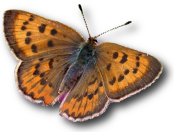 Art Shapiro's Butterfly Site
Art Shapiro's Butterfly Site
Monitoring butterfly populations across Central California for more than 35 years… Adelpha bredowii californica
Common Name: California Sister

A common species of oak woodlands. Glides back and forth along streambeds and roads; males perch on branches and foliage, frequently in oak. Both sexes visit mud puddles. (This is unusual; in most butterflies only males "puddle.") The female is larger than the male, with broader wings and a less pointed forewing apex. There is no variation in color and pattern. This butterfly has been shown to be mildly distasteful to birds and to be mimicked by the more edible Lorquin's Admiral in California. The genus Adelpha is of New World Tropical origin. Although our Sister is usually classified as conspecific (belonging to the same species) with the desert Southwest form, subspecies eulalia, we suspect the two are good biological species.
Two to three broods, flying March or April to November at lower elevations. Most abundant in the foothills (Sierra and Coast Range/Bay Area) and lower montane zone. Uncommon or rare, and irregular, on the floor of the Central Valley, but occasionally seen in cities and suburbs. Females are highly dispersive and are most likely to be seen in unusual places. The species is not a permanent resident in our area above 5000' but is seen regularly up to 7000' or higher in late spring-early summer and again in autumn.
Host plants oaks, especially Live Oaks (Quercus agrifolia, wislizenii and chrysolepis). Adults visit flowers (California Buckeye, Yerba Santa, Dogbane, Giant Hyssop, Goldenrod, Coyotebrush) but also dung, carrion, flowing sap, damaged fruit, etc.--a very tropical lifestyle.


